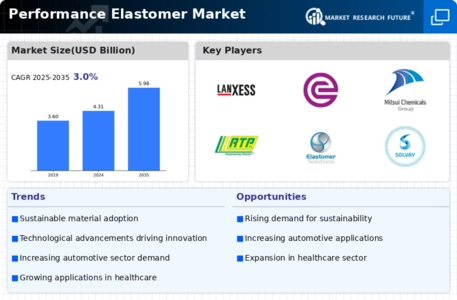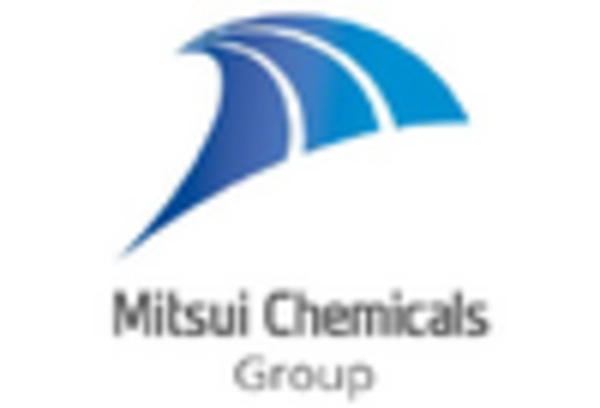Expansion in Consumer Goods
The consumer goods sector is increasingly adopting performance elastomers due to their superior properties, which enhance product durability and functionality. Performance elastomer market analysis reveals that this sector has shown a growth rate of approximately 5% annually, driven by the demand for high-quality, long-lasting products. Items such as household appliances, sporting goods, and personal care products benefit from the resilience and flexibility of these materials. As consumers become more discerning about product quality, manufacturers are compelled to integrate performance elastomers into their designs to ensure competitive advantage. This trend not only boosts the performance elastomer market but also encourages innovation in product development, as companies strive to meet evolving consumer preferences.
Rising Demand in Automotive Sector
The automotive sector is experiencing a notable surge in demand for performance elastomers, driven by the need for lightweight and durable materials. Performance elastomer market data indicates that the automotive segment accounted for a substantial share, approximately 30% of the total market in recent years. This trend is largely attributed to the increasing focus on fuel efficiency and emissions reduction, prompting manufacturers to seek advanced materials that can withstand extreme conditions while providing flexibility. As electric vehicles gain traction, the demand for high-performance elastomers is expected to rise further, as these materials are essential for components such as seals, gaskets, and hoses. Consequently, the performance elastomer market is poised for growth, as automotive manufacturers prioritize innovative solutions to meet regulatory standards and consumer expectations.
Growth in Renewable Energy Applications
The renewable energy sector is increasingly utilizing performance elastomers, driven by the need for materials that can withstand harsh environmental conditions. Performance elastomer market trends indicate that this sector is experiencing a growth rate of approximately 7% annually, as the demand for wind and solar energy solutions rises. These elastomers are essential for components such as seals and gaskets in wind turbines and solar panels, where durability and resistance to extreme temperatures are critical. As the world shifts towards sustainable energy sources, the performance elastomer market is likely to benefit from this transition, as manufacturers seek reliable materials that contribute to the efficiency and longevity of renewable energy systems.
Regulatory Compliance and Safety Standards
The increasing emphasis on regulatory compliance and safety standards is a key driver for the performance elastomer market. Industries such as healthcare and food packaging are subject to stringent regulations regarding material safety and performance. Performance elastomers, known for their non-toxic and durable characteristics, are becoming the preferred choice for applications requiring compliance with these standards. Recent statistics indicate that the healthcare sector alone is projected to grow by 6% annually, largely due to the rising demand for safe and reliable materials in medical devices and equipment. As companies strive to adhere to these regulations, the performance elastomer market is expected to expand, as manufacturers seek materials that not only meet safety requirements but also enhance product performance.
Technological Innovations in Manufacturing
Technological advancements in manufacturing processes are significantly influencing the performance elastomer market. Innovations such as 3D printing and advanced compounding techniques are enabling the production of elastomers with enhanced properties, including improved thermal stability and chemical resistance. Recent data suggests that the adoption of these technologies has led to a reduction in production costs by approximately 15%, making performance elastomers more accessible to various industries. Furthermore, these innovations facilitate the customization of elastomer formulations to meet specific application requirements, thereby expanding their use across diverse sectors. As manufacturers continue to invest in research and development, the performance elastomer market is likely to witness accelerated growth, driven by the introduction of novel materials and processes.


















Leave a Comment